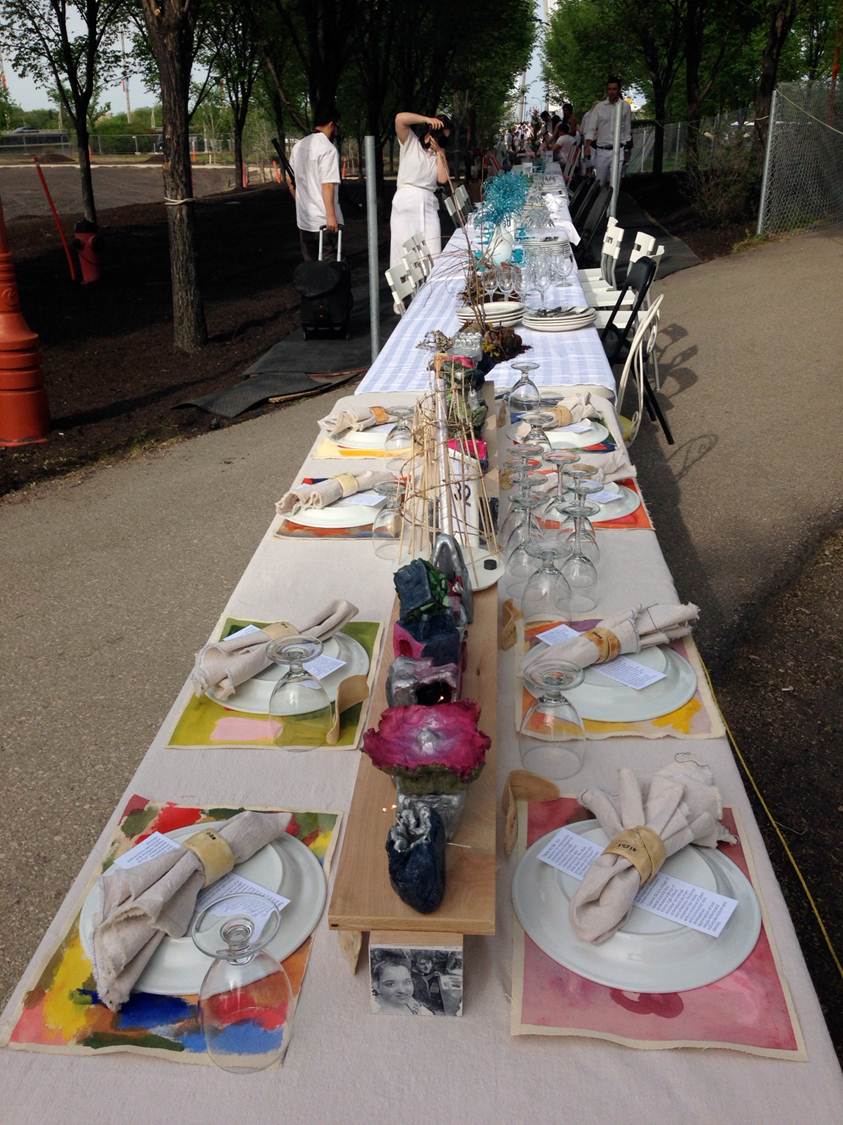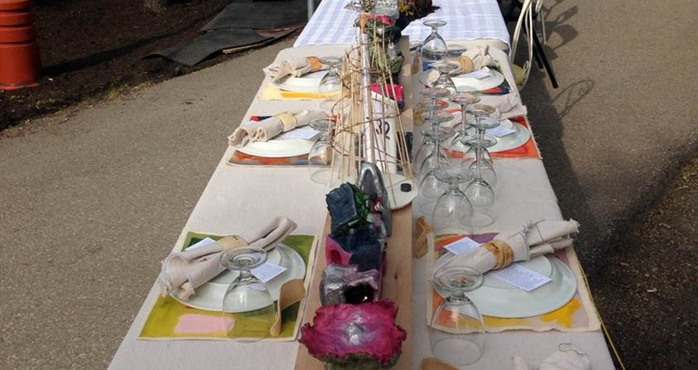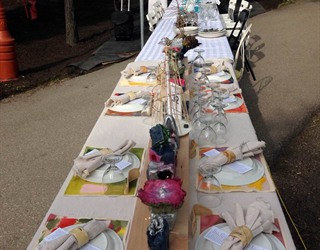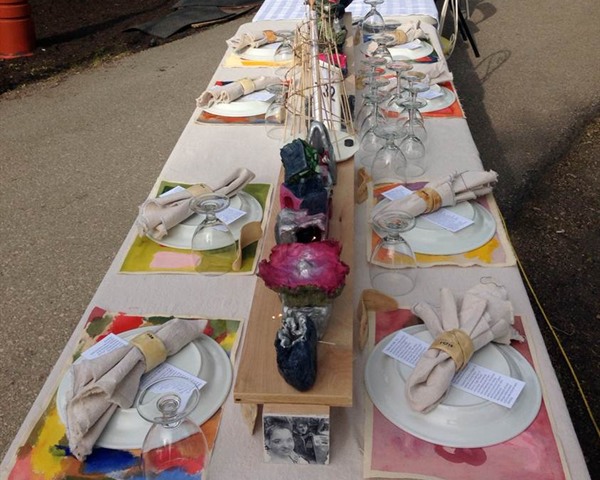Table #132
February 8, 2021
The Table for 1200 was an event that capped off the Architecture Fringe Festival May 31....150 tables were set up end to end, spanning 365 meters, and stretched from the Human Rights Museum over the Esplanade into St. Boniface. 1200 guests all dressed in white sat down to a an incredible meal by Mandel Hitzer from Deer and Almond -Mandel was also a former Kelvin student!- the table settings and centrepieces were all created by architects from Winnipeg and all over Canada, as well as design firms, art galleries, etc.
It was amazing to be involved, and allowed to be amongst such great company. Kelvin High School, students in the IB Visual Arts class as well as Ms. Kirkwood's C-slot Art class put together an installation of ceramic housing units that represented their vision of a healthy dynamic community: one built on inclusion and diversity. In the center of the piece two students built a model of Tatlin's Monument, which represents the unlimited potential of combining a variety of elements which together create balance. It was also an obvious influence in the design of the Canadian Museum of Human Rights, which was the background of our display.
Kelvin won the first place prize for our design. We were the only high school involved in a field of Architects, Designers and Artists involved. It was a mighty proud day to be a Clipper!
“The capacity for responsible citizenship is shaped in childhood through education, practice, observation, and opportunity. We often hear that ‘children and youth are out future,’ but their opinions and needs are rarely considered in decisions affecting the future of our communities.
Through the promotion of children’s and youth’s right to be heard and to participate, planners and educators will demonstrate a respect for children and youth that will lead to a safer and healthier tomorrow.” – Canadian Institute of Planners
“Table #132 is a collage of spatial inquiry that showcases a group of kelvin High School students’ contextual understanding of art and urbanism. Students connected the visual arts to contexts of place and community, and developed an appreciation of how design reflects and influences culture.” – Lane Gibson









